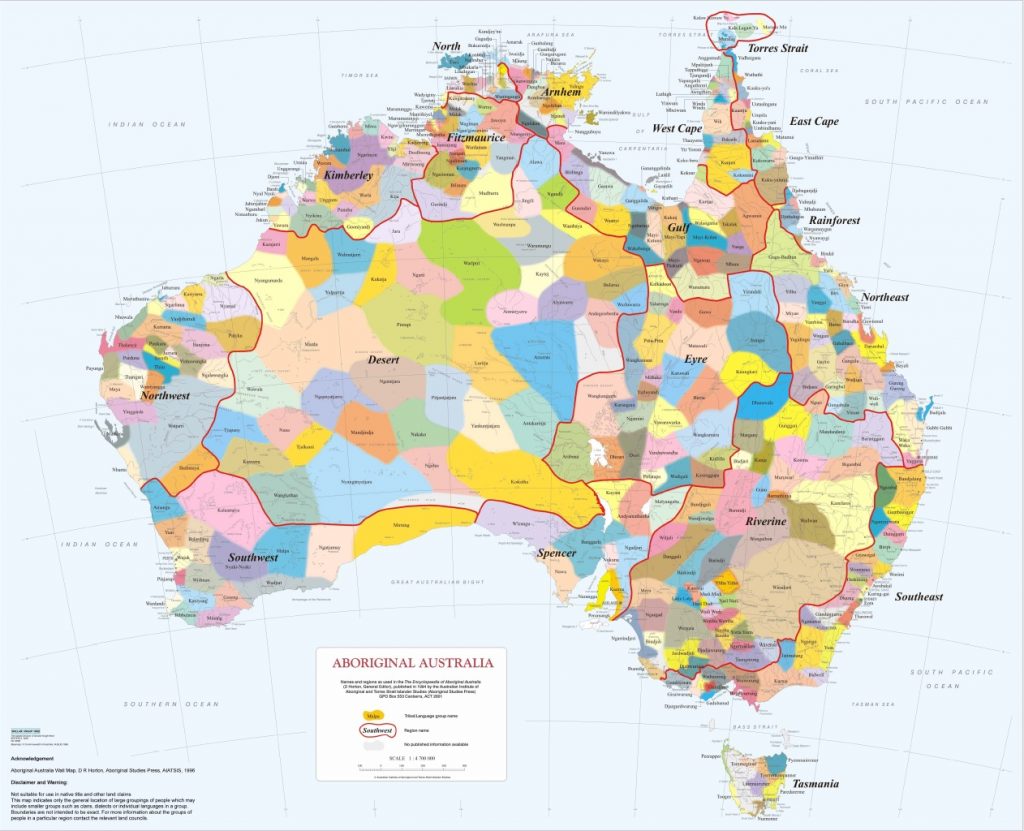When I come across an article like Aboriginal languages could reveal scientific clues to Australia’s unique past I generally find myself ignoring references to ancient astronauts but clicking down a host of other warrens helping me catch up on tidbits of fascinating insights into aboriginal culture and beliefs that I have missed in the past ten or so years. This one was no different. It led to myths about meteorites and variable stars and another look at the following map of indigenous languages
And that map reminds me of a project I was closely involved with as a metadata and open access repository librarian not very long ago and that I helped get kick started, the Living Archive of Aboriginal Languages. Some years back a certain federal government decided that bilingual education in remote aboriginal communities was not a good idea so many text resources in schools that had been painstakingly produced in local indigenous languages were stacked away to gather dust and creepy crawlies or even dumped in bins. In some cases these books were the only written records of the languages in existence. After an academic from Charles Darwin University (CDU) successfully sought funding to rescue as many of these print resources as possible, an irreplaceable resource for both scholarly linguists internationally and local aboriginal communities themselves, the Living Archive of Aboriginal Languages (LAAL) was set up and, since I happened to be working at CDU at the time, I found myself with another very worthy task to assist with.
It was a fascinating project. As a metadata librarian one of my main challenges was investigating ways to facilitate open access to languages and even ideational concepts that had no simple point by point correlation with English; yet more … to find optimal ways to facilitate open access to both linguist scholars and local aboriginal communities.

